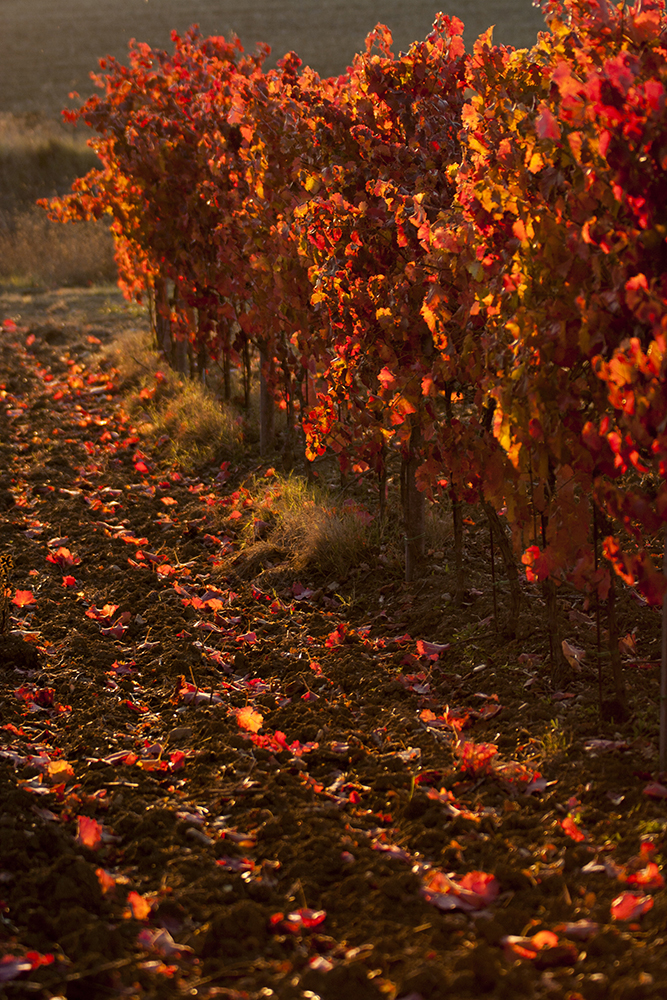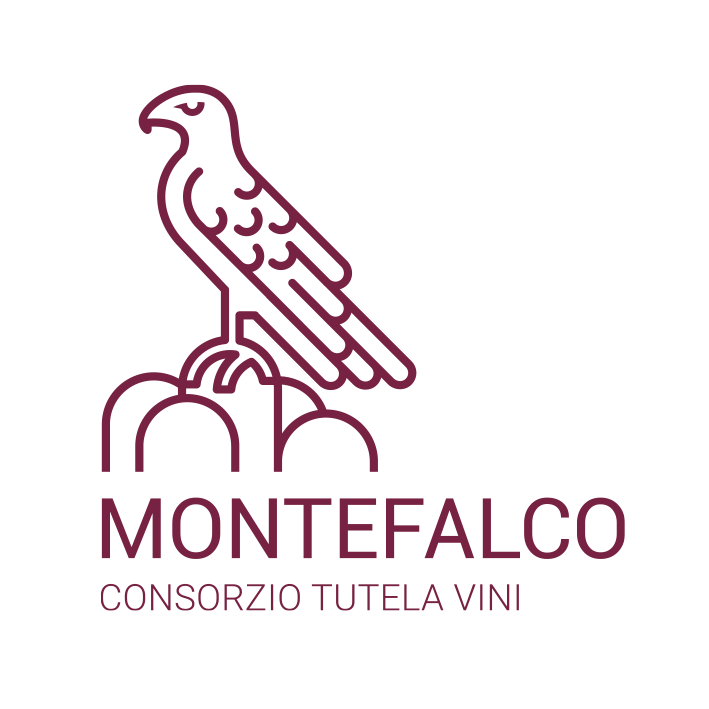Sagrantino
a symbol of Montefalco
Sagrantino
a symbol of Montefalco



A few wines, in Umbria, are able to represent the concept of terroir like Montefalco Sagrantino does; Controlled and Guaranteed Designation of Origin (DOCG) that can be produced exclusively in the hilly territory of Montefalco and in part of the municipalities of Bevagna, Castel Ritaldi, Giano dell'Umbria and Gualdo Cattaneo.
Sagrantino has been basing here since very long time ago, it was probably growth already by the first Franciscan friars who used it, as the name suggests, for “sacraments”. It’s then - clearly - a local variety.
In 1451 the famous Florentine painter Benozzo Gozzoli, called by the Franciscans to paint the apse of their church, perhaps alluded to Sagrantino painting the bottle of red wine on the table of the knight from Celano, among the frescoes dedica- ted to the life of the Saint.
A crucial date is 1549, year of the first document specifically mentioning Sagrantino (order of Sagrantino must by the Jewish Guglielmo, merchant of Trevi, and his wife Stella).
During the Umbrian Exposition of 1899, Sagrantino obtained an official recognition, as a "superior dessert wine or table wine".
An interesting essay by S. Martini, dated 1908, deals with a priest named Tiburzi who seems to have been the father of modern and specialized viticulture in Mon tefalco in the early 1800s; epoch of great impulse for the renewal of the vineyards, to guarantee a better wine production.
In 1915, Franzi reconnects to the remote history of Sagrantino, confirming that "it was selected within the convent gardens by the first followers of St. Francis, and then spread across the surrounding territories".
Like many other great pearls of international wine world, even the most remote history of Sagrantino is linked to the production of sweet wines. It is however the recent "dry" version that has legitimised this wine on the scene of the great Italian reds.
Thanks to this new course, Sagrantino has launched its contemporary history, obtaining the DOC recognition in 1979 and the DOCG one in 1992. A path in progress, yet increasingly clear, aware and mature, able to highlight different stylistic variations albeit within an unmistakable “Mediterranean” trait made of intensity, power and extraordinary potential for ageing.

A few wines, in Umbria, are able to represent the concept of terroir like Montefalco Sagrantino does; Controlled and Guaranteed Designation of Origin (DOCG) that can be produced exclusively in the hilly territory of Montefalco and in part of the municipalities of Bevagna, Castel Ritaldi, Giano dell'Umbria and Gualdo Cattaneo.
Sagrantino has been basing here since very long time ago, it was probably growth already by the first Franciscan friars who used it, as the name suggests, for “sacraments”. It’s then - clearly - a local variety.
In 1451 the famous Florentine painter Benozzo Gozzoli, called by the Franciscans to paint the apse of their church, perhaps alluded to Sagrantino painting the bottle of red wine on the table of the knight from Celano, among the frescoes dedica- ted to the life of the Saint.
A crucial date is 1549, year of the first document specifically mentioning Sagrantino (order of Sagrantino must by the Jewish Guglielmo, merchant of Trevi, and his wife Stella).
During the Umbrian Exposition of 1899, Sagrantino obtained an official recognition, as a "superior dessert wine or table wine".
An interesting essay by S. Martini, dated 1908, deals with a priest named Tiburzi who seems to have been the father of modern and specialized viticulture in Mon tefalco in the early 1800s; epoch of great impulse for the renewal of the vineyards, to guarantee a better wine production.
In 1915, Franzi reconnects to the remote history of Sagrantino, confirming that "it was selected within the convent gardens by the first followers of St. Francis, and then spread across the surrounding territories".
Like many other great pearls of international wine world, even the most remote history of Sagrantino is linked to the production of sweet wines. It is however the recent "dry" version that has legitimised this wine on the scene of the great Italian reds.
Thanks to this new course, Sagrantino has launched its contemporary history, obtaining the DOC recognition in 1979 and the DOCG one in 1992. A path in progress, yet increasingly clear, aware and mature, able to highlight different stylistic variations albeit within an unmistakable “Mediterranean” trait made of intensity, power and extraordinary potential for ageing.

